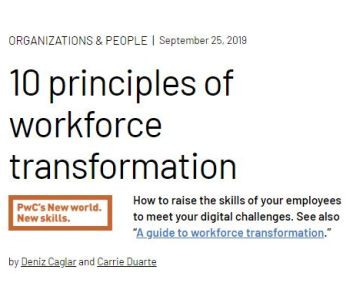Join getAbstract to access the summary!

Join getAbstract to access the summary!
Deniz Caglar and Carrie Duarte
10 Principles of Workforce Transformation
Strategy+business, 2019
What's inside?
As new technologies emerge, a company’s best asset is still its people. Success hinges on staff’s ability to adapt.
Recommendation
In this age of apps, automation and AI, cultivating a talented workforce is more important than ever. Workers must constantly refresh ideas and gain new skills – leaving companies pondering how to get everyone up to date. Map your next move toward lasting workforce transformation with detailed insight from Deniz Caglar and Carrie Duarte of PwC. Packed with relevant real-world examples, their essential principles speak to any senior executive who wants to learn more about change management.
Summary
About the Authors
Deniz Caglar and Carrie Duarte are experts in transforming organizations for PwC, an international network that delivers services to clients at 420 Fortune 500 companies.


















Comment on this summary